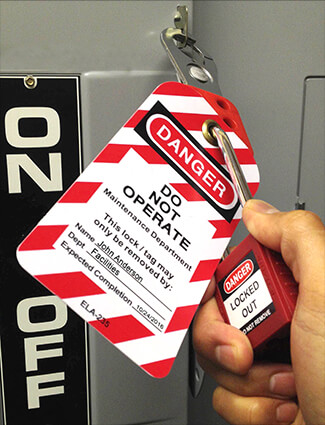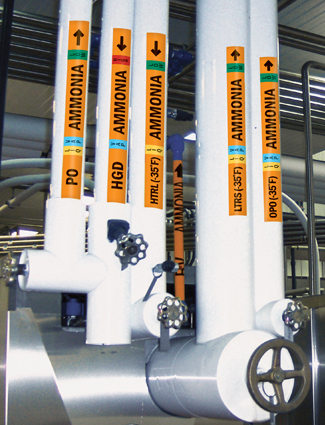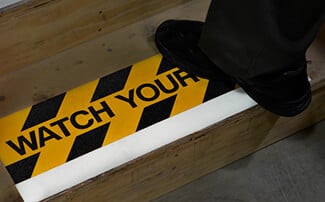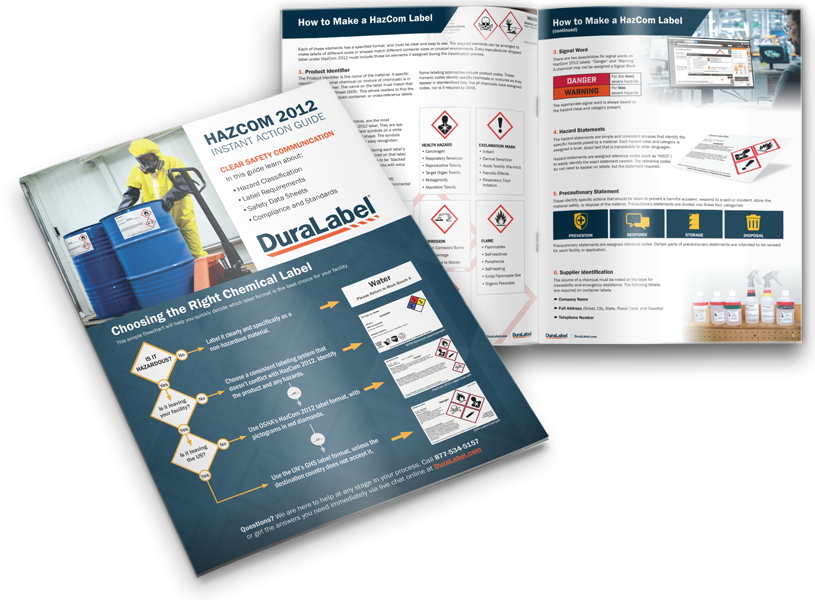Avoiding Hazards in the Food Processing Industry

Journalist and activist, Upton Sinclair, revealed the horrors of the food processing and manufacturing industry when he wrote "The Jungle" in 1906. Sinclair's groundbreaking book offered a behind-the-scenes look at life in Chicago's turn-of-the-century meatpacking plants, and his unflinching reporting led to industry-wide reform and improved safety efforts throughout the United States.
Workers in the food processing and manufacturing industry continue to face numerous health risks even with technological advances and new regulations.
What are some of the common hazards workers encounter, and how can employers keep them safe on the job?
Identifying Machine Hazards for Warehouse Safety
Machines used to clean, process, and package food are wrought with risks and hazards. Each year, numerous U.S. workers are killed in machine-related accidents, and countless others are injured.
These workers face a number of hazards, including conveyors with moving or exposed parts, collapsing structures, falling objects, and compressed equipment. It's important to know these dangers to better improve job site safety.

For all the dangers that come with high-tech machinery, a few risks are more common than most. Those include:
- Machine guarding: Employers must provide guards to protect workers from moving and/or exposed parts.
- Lockout/Tagout (LOTO): Machines and electrical equipment must be properly shut down, de-energized, and locked out during maintenance and servicing; when proper precautions aren't taken, workers face increased risk of burns and electrocution.
- Loud noises: They might seem like a minor inconvenience, but loud noises may prevent communication between employees, increasing the risk of injury.
Proper Label Solutions for Safer Food Industry Machinery
Conveyors are common in the food processing and manufacturing industries, and visual communication can protect workers from hot surfaces, exposed and moving parts, pressurized systems, and more.
The Conveyor Equipment Manufacturers Association (CEMA) has developed a standardized safety labeling system to keep workers safe around conveyors; these designs comply with standards established by the American National Standards Institute (ANSI) and use three signal words to communicate the seriousness of a hazard:
- Danger signs and labels communicate the most serious hazards, where death or serious injury will likely to occur if special precautions aren't taken.
- Warning signs and labels outline hazards that can result in death or serious injury-but only when the overall risk isn't severe enough to warrant a "Danger" sign.
- Caution signs describe hazards that may lead to minor or moderate injuries if not avoided.
Threats from Release of Ammonia
The Bureau of Labor and Statistics (BLS) reported that workers sustained 839 fatalities from exposure to harmful substances or environments in 2022, and many of those involved the toxic chemical anhydrous ammonia.

Throughout the United States, anhydrous ammonia is a popular refrigerant in food processing and manufacturing facilities. You'll find the substance in breweries, juice and soft drink processing facilities, meat processing plants, and other food processing plants.
Despite that ubiquity, ammonia poses numerous risks to workers. Those hazards include:
- Corrosive: Ammonia can cause damage to the skin, eyes, and lungs.
- Flammable: Ammonia can be lethal at concentrations of roughly 15% to 28% by volume in air.
- Explosive: If released in enclosed spaces with a source of ignition present, ammonia can cause life-threatening explosions.
Protecting Food Workers from Ammonia
For a safer environment, U.S.-based food processing and manufacturing plants must use chemical resistant labels for all pipes that transport ammonia in accordance with International Institute for Ammonia Refrigeration (IIAR) Bulletin No. 114, the accepted standard for labeling ammonia refrigeration systems.
The standard requires employers to mark system components, such as compressors, pumps, and receivers, and maintains that all ammonia pipe labels include the following five components:
- Piping Abbreviation
- Physical State
- Pipe Contents
- Pressure Level
- Flow Direction
These Occupational Safety and Health Administration (OSHA) compliant labels must include a component identifier and indicate the pressure level, as well.
The Workplace Organization Nightmare: Slip, Trip, and Fall Dangers
Slip, trip, and fall hazards are among the most common causes of injury in both the food manufacturing industry and U.S. workplaces in general. According to the BLS, roughly 1,000 workers were fatally injured in slips, trips, and falls in 2022.
Given the high volume of liquids used in food manufacturing and processing, workers are regularly exposed to wet and unsafe surfaces. Workers can easily slip in puddles of water, trip over uneven surfaces, or fall when trying to access a platform.
OSHA's standard for walking-working surfaces, 29 CFR 1910.22, requires the following for ensuring clean working areas:
- Workroom floors must be clean and dry (whenever possible), and employers must mitigate hazards caused by inclement weather, loose boards, spills, and more.
- Employers must provide drainage and dry standing places (such as floor mats) when wet processes are used in commercial food processing plants and other facilities.
- All walking-working surfaces must be inspected and maintained in safe, working condition.
Reducing Slips, Trips, and Falls in the Processing Plant
Floor marking and wayfinding tape is one of the easiest, most efficient solutions for mitigating slip, trip, and fall hazards.

In particular, you can improve stability in wet and slippery conditions with textured floor tape for more efficient wayfinding signage. Here's how some of our tapes help workers stay upright, safe, and mobile:
- Tread Tape: Basic tread tape helps workers "grip" the surface, even when wet, preventing slips and falls.
- Tread Plates: When working on uneven or loose surfaces, bolted-down tread plates help improve traction in a variety of conditions-and on a variety of surfaces.
- Tread Caution Steps: Yellow-and-black textured plates keep workers safe on steps, entryways, ledges, and more.
Maintaining a Safe Food Facility with DuraLabel Solutions
How can you maintain a safe food processing facility, improve efficiency, and keep facility workers safe? The DuraLabel Kodiak Max Industrial Sign and Label Print System, a two-color printing machine, is loaded with LabelForge Pro that creates standardized signs and labels that meet regulatory requirements.
Whether you need safety signs, pipe markers, or equipment labels—the Kodiak Max is ready to meet your needs. Get help crafting a system that will provide the safety communication for your facility. Call 1-888-402-8820 and one of our experts will guide you through the process.
DuraLabel's free OSHA Signage Quick Start Guide offers in-depth, best practices for labeling your facility according to OSHA and ANSI requirements.
Read Next:
Lean Manufacturing in the Food Industry
Machine Guards and Amputation Hazard
Related Resources

NFPA 704
NFPA 704 Labels NFPA 704 - Standard System for the Identification of the Hazards of Materials for Emergency ...
Read
The Importance of Chemical Risk Assessments
Chemicals are in use in workplaces every day. It is important to follow and maintain chemical safety for ...
Read
Hazardous Chemicals Overview
In the eyes of OSHA, hazardous materials run the gamut from household cleaners to deadly gasses. Effects can ...
Read.png)





